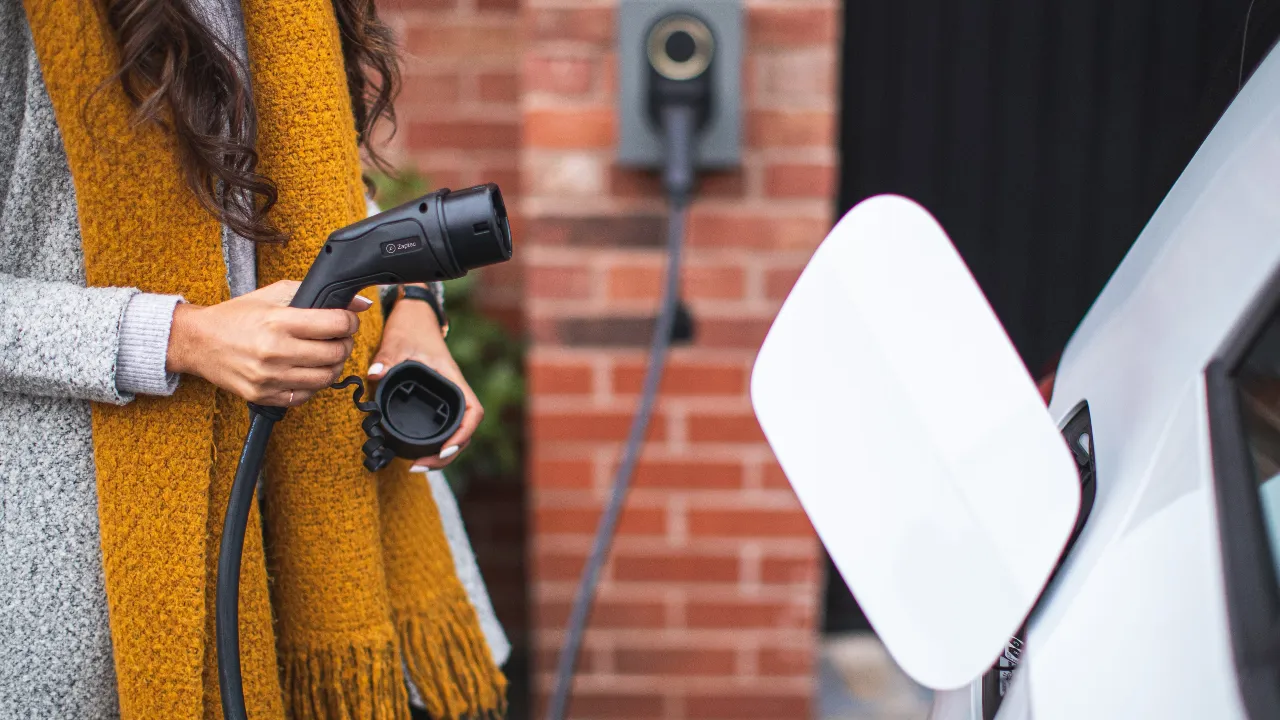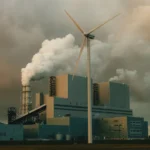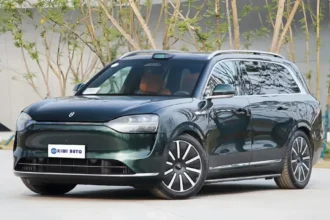India’s Electric Vehicle Revolution: Understanding the Road to 123 Million EVs
Have you ever wondered how many electric vehicles will be on Indian roads in the future? According to a new report from the India Energy Storage Alliance (IESA) and Customized Energy Solutions (CES), India could have a staggering 123 million electric vehicles by the year 2032. This is a massive jump from today’s numbers and shows how quickly our country is moving toward cleaner transportation. ZeeBusiness reports this finding as part of a comprehensive study on India’s EV future.
How Far We’ve Come: India’s Current EV Journey
India’s electric vehicle story has already seen impressive growth in recent years. The country had only 350,000 electric vehicles (0.35 million) on its roads in 2019, but that number has grown more than twelve times to reach 4.4 million in 2024. This rapid increase shows that more and more Indians are choosing electric vehicles over traditional petrol and diesel options.
When we look at the types of electric vehicles Indians are buying, two-wheelers and three-wheelers are clearly the most popular choices. These smaller vehicles make up over 93% of all electric vehicles currently on Indian roads in 2024. This makes sense because motorcycles, scooters, and auto-rickshaws are already the backbone of daily transportation for millions of Indians.
The report also reveals that around 220,000 personal electric cars (four-wheelers) are currently being used by Indians. While this is a smaller portion of the overall EV market, it represents an important segment that is expected to grow significantly in the coming years.
Breaking Down the 123 Million Target: What Does It Really Mean?
The projection of 123 million electric vehicles by 2032 is not just a random number. It comes from what experts call the National EV Targets (NEV) scenario, which is the most ambitious growth path outlined in the IESA-CES report. To understand how big this number is, think about it this way: India would go from having 4.4 million EVs today to almost 28 times that amount in just seven years.
Vinayak Walimbe, Managing Director of Customized Energy Solutions India Pvt Ltd, explains the targets behind this projection: “The NEV scenario is based on the EV30@30 ambition, assuming that by 2030, EV penetration reaches 80% for electric two- and three-wheelers, 30% for private electric four-wheelers, 70% for commercial cars, and 40% for electric buses.”
Let’s break down what these 123 million vehicles would look like by 2032:
- The vast majority would still be two-wheelers and three-wheelers, continuing their dominance in the Indian market. These vehicles are more affordable, perfect for navigating crowded city streets, and meet the daily transportation needs of most Indians.
- Between 4.3 million and 10 million would be four-wheelers (personal cars and commercial vehicles). This represents a massive growth from the current 220,000 electric cars, showing how the Indian middle class is expected to increasingly choose electric options for family transportation.
- Approximately 450,000 to 1.1 million would be buses and trucks. While smaller in number, these larger vehicles are crucial for public transportation and logistics, and their electrification would significantly reduce urban pollution.
The Government Push: How Policies Are Driving EV Adoption
This dramatic growth in electric vehicles isn’t happening by accident. Government support through targeted policies is playing a crucial role in accelerating EV adoption across India. The most important of these is the FAME-II scheme (Faster Adoption and Manufacturing of Electric Vehicles in India Phase II).
The FAME-II scheme works by offering financial incentives to make electric vehicles more affordable for buyers. These incentives reduce the purchase price of electric two-wheelers, three-wheelers, and four-wheelers, helping to overcome one of the biggest barriers to EV adoption – the higher upfront cost compared to conventional vehicles.
But the government isn’t just focused on making vehicles cheaper. It’s also supporting the development of charging infrastructure through capital subsidies. This means companies that build public charging stations can get financial help, making it more profitable to invest in this essential infrastructure.
| Policy Element | How It Works | Impact on EV Adoption |
|---|---|---|
| Demand Incentives | Direct subsidies that reduce the purchase price of electric vehicles for consumers. These make EVs more competitive with traditional vehicles in terms of upfront cost. | Makes electric vehicles more affordable for average Indians, particularly in the two-wheeler and three-wheeler segments which are most price-sensitive. |
| Charging Infrastructure Subsidies | Financial support for companies building public charging stations, reducing their investment costs and encouraging network expansion. | Addresses “range anxiety” by ensuring more places to charge, making EV ownership more practical for everyday use. |
| National EV Targets | Setting clear goals for electric vehicle adoption across different vehicle categories, guiding both industry and policy development. | Provides certainty for manufacturers and investors, encouraging them to commit resources to EV production and related industries. |
The Charging Challenge: Building Infrastructure for Millions
For 123 million electric vehicles to operate effectively, India needs a massive expansion of its charging infrastructure. Debmalya Sen, President of IESA, highlights this critical challenge: “To support the projected EV growth, we can anticipate that India’s cumulative installed EV charging points–public and captive–will need to grow nearly 12 to 28 times, from around 76,000 in 2024 to between 0.9 million and 2.1 million by 2032.”
Currently, India has about 76,000 charging points in total, with a charging capacity of 1.3 gigawatts (GW). By 2032, this capacity will need to increase dramatically to 23 GW – that’s almost 18 times the current capacity. Think of it as needing to build the equivalent of several large power plants just to charge all these new electric vehicles.
The report also reveals that India had 320,000 private Type-2 AC chargers in 2024. These are slower chargers typically installed in homes and workplaces, providing convenient overnight charging for vehicle owners. This number will also need to grow substantially as more Indians purchase electric vehicles for personal use.
Understanding the Forecast Models: Different Paths to the Future
The IESA and CES report doesn’t just provide one prediction for the future. Instead, it outlines three different possible scenarios for how electric vehicle adoption might unfold in India. These are called the Worst Case, Business as Usual (BAU), and National EV Targets (NEV) scenarios.
The 123 million EVs by 2032 prediction comes from the most optimistic scenario – the National EV Targets (NEV) scenario. This scenario aligns with international goals like the EV30@30 ambition (a global campaign aiming for 30% market share for electric vehicles by 2030) and NITI Aayog’s vision for transportation in India.
Here’s what each scenario means for India’s electric vehicle future:
- Worst Case Scenario: This represents the slowest adoption path, where current momentum slows down due to potential challenges like battery supply constraints, slower infrastructure development, or reduced government support. Even in this scenario, India would still see significant EV growth, but at a much more modest pace.
- Business as Usual (BAU): This middle-path scenario assumes current trends continue without major new policy interventions or market disruptions. Electric two-wheelers and three-wheelers would still see strong growth, while four-wheeler adoption would increase at a steady but not dramatic pace.
- National EV Targets (NEV): This most ambitious scenario assumes strong policy support continues and even expands, battery prices fall faster than expected, and charging infrastructure keeps pace with vehicle adoption. This is the path that leads to 123 million EVs by 2032.
What This Electric Future Means for India
The projected growth of electric vehicles in India represents more than just numbers – it signals a fundamental shift in how Indians will move around in the coming decade. This transition to electric mobility will impact everything from air quality in cities to energy demand patterns and industrial development.
For the average Indian, this electric revolution means more affordable transportation options as battery prices continue to fall and government incentives make EVs increasingly competitive. It also means cleaner air to breathe, especially in congested urban areas where vehicle emissions are a major source of pollution.
As India moves toward this electric future, the biggest question remains whether the country can build charging infrastructure fast enough to support these millions of new electric vehicles. Will India’s power grid be ready for this massive new demand? And will the ambitious targets set in the National EV Targets scenario actually be achieved? The answers will shape how Indians move around for generations to come.











